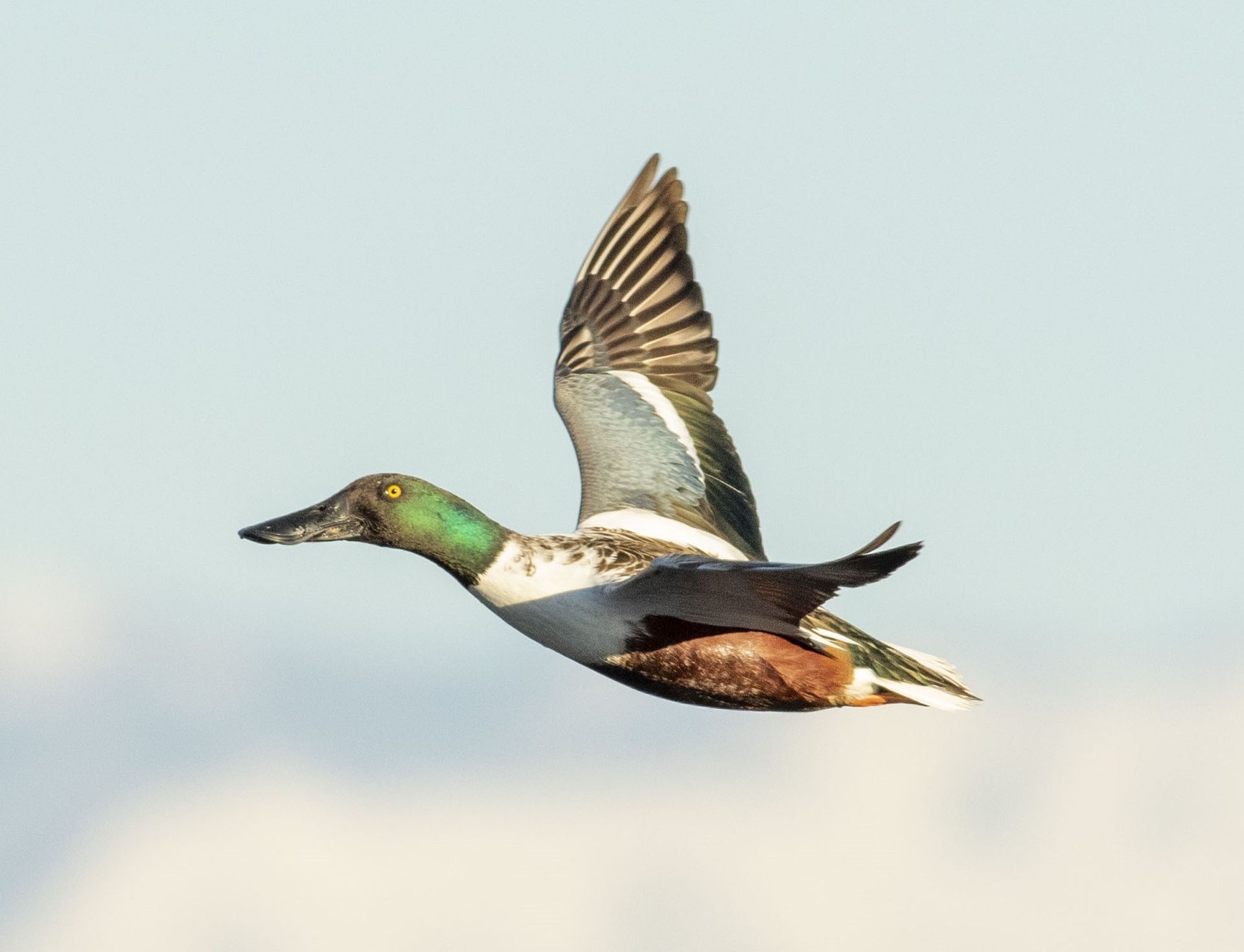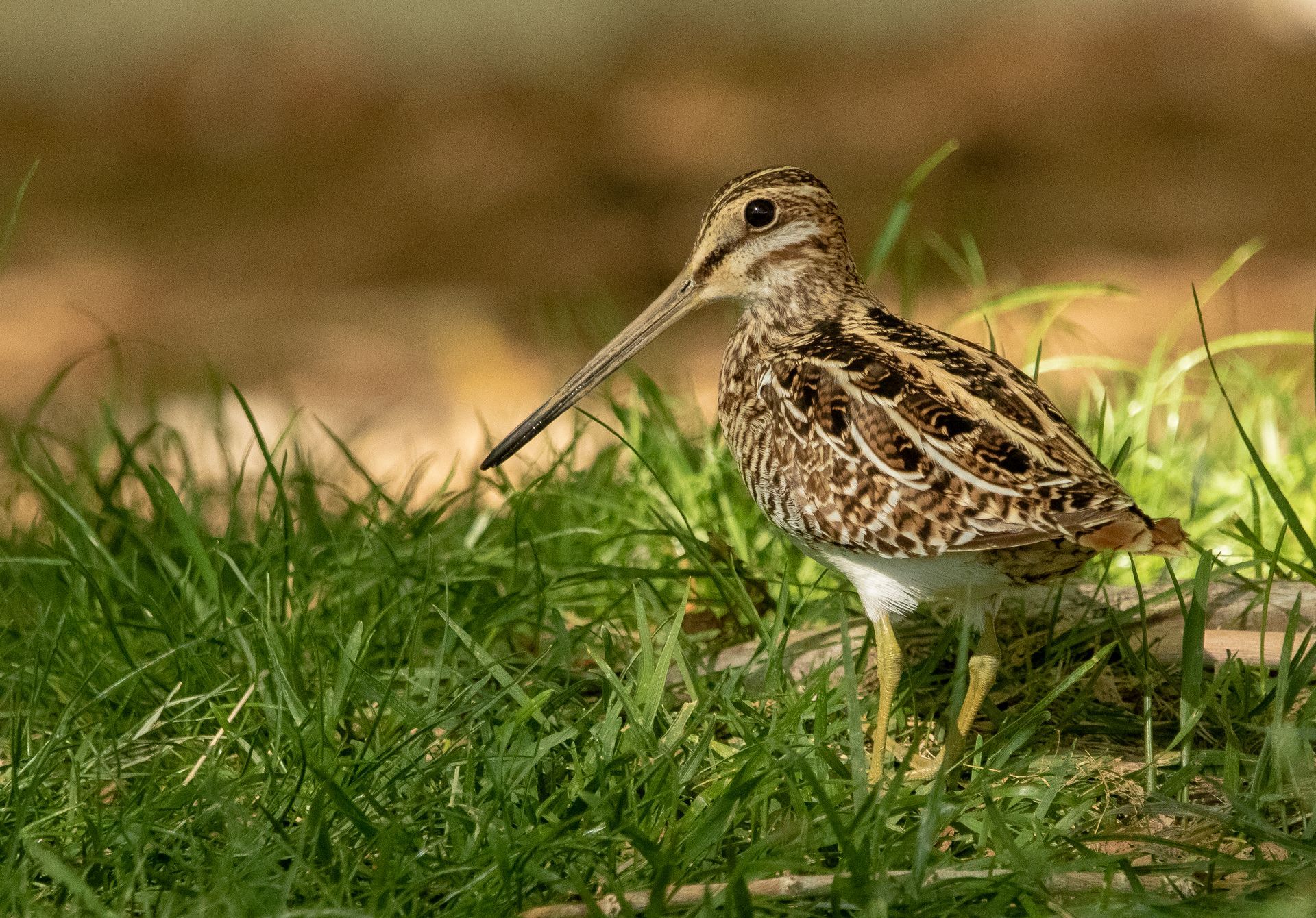January Bird Forecast

by Alex Harper
Cold, dense air blankets the valleys and basins of the lowlands, and snow may cover mountain slopes. The sun arcs low across the horizon, and the days are especially short. Just about all the deciduous trees have lost their leaves after a few windy December days. The loss of leaf cover forces some songbirds to forage lower to the ground or move around locally to find fuel and cover. Since insects may only be active during the warmest parts of the warmest of January days, you may notice Ruby-crowned Kinglets and Yellow-rumped Warblers using ingenuity to find dormant or dead insects and spiders. In lots and natural areas, White-crowned Sparrows and House Finches feed on seeding quailbush.
Many January days can be bone-chilling, but on calm and warmer days, signs of breeding activities will be noticeable in urban areas. You may hear the loud popping sounds of displaying Anna’s Hummingbirds, see Eurasian Collared-Doves “paragliding” between powerlines, or notice robins and mockingbirds tuning up their songs. This is in response to the gradual increase in daylight following the winter solstice in December; birds are so attuned to light that some resident species may get a jumpstart on establishing territories and attracting mates.
Wetlands, parks with water, and golf courses can host high species of duck diversity. Along the Las Vegas Wash from the upper wash to Lake Las Vegas, open water attracts teals, Mallards, American Wigeons, pintails, Gadwalls, Ring-necked Ducks, and Lesser Scaups. Wigeons and Gadwalls are especially drawn to weirs, where they feed on algae growing on rocks. Northern Shovelers may be absent along the Wash, preferring the calmer waters of the Henderson Bird Viewing Preserve.
American Wigeons, Ring-necked Ducks, and Redheads all may be found at city park ponds and lakes, where they have learned to take handouts. Geese move in between nighttime roosts around water for open grassy areas during the day. Geese are grazers, and you may see small groups of Snow Geese and the odd Cackling, Greater White-fronted, or Ross’s Geese among Canada Geese on soccer fields or golf course lawns.
Lake Mead can attract grebes, loons, and diving ducks. Check the areas where the Las Vegas Wash meets the lake, which is currently near Government Wash and 33-Hole. Large enough fish for grebes, loons, and cormorants are attracted to this outwash, and it can be an excellent place to look for these and other waterbirds that eat medium-sized to large fish.
Lake Mead is also attractive to gulls in January and late winter. Gulls are dynamic, intelligent, can be difficult to identify to a species-level, and are prone to wandering. For these reasons and more, birders often find looking for gulls an exciting challenge. Only a few species are expected on any given visit to Lake Mead, but the reservoir lures in just about any North American gull species. Gulls go where they are fed, and they roost in safe areas close to consistent feeding areas. 33-Hole, Government Wash, Boulder Beach and Hemenway Harbor are all tried-and-true locations to look for gulls. Scan through flocks of ubiquitous Ring-billed, California, and occasional Herring for Lesser Black-backed and Iceland Gulls. Eventually, you may see something completely unexpected.
Overall, January can be used to see waterfowl move and court one another, as well as life cycles of wintering and resident birds. For some bird species, they are weeks or months away from migrating to their breeding grounds, which in some cases may be in Canada or Alaska. For our year-round neighborhood birds, they may be transitioning out of their winter behavior of wandering for food and beginning to set up territory. By February, we will welcome the vanguards of returning swallows.
RECENT ARTICLES



